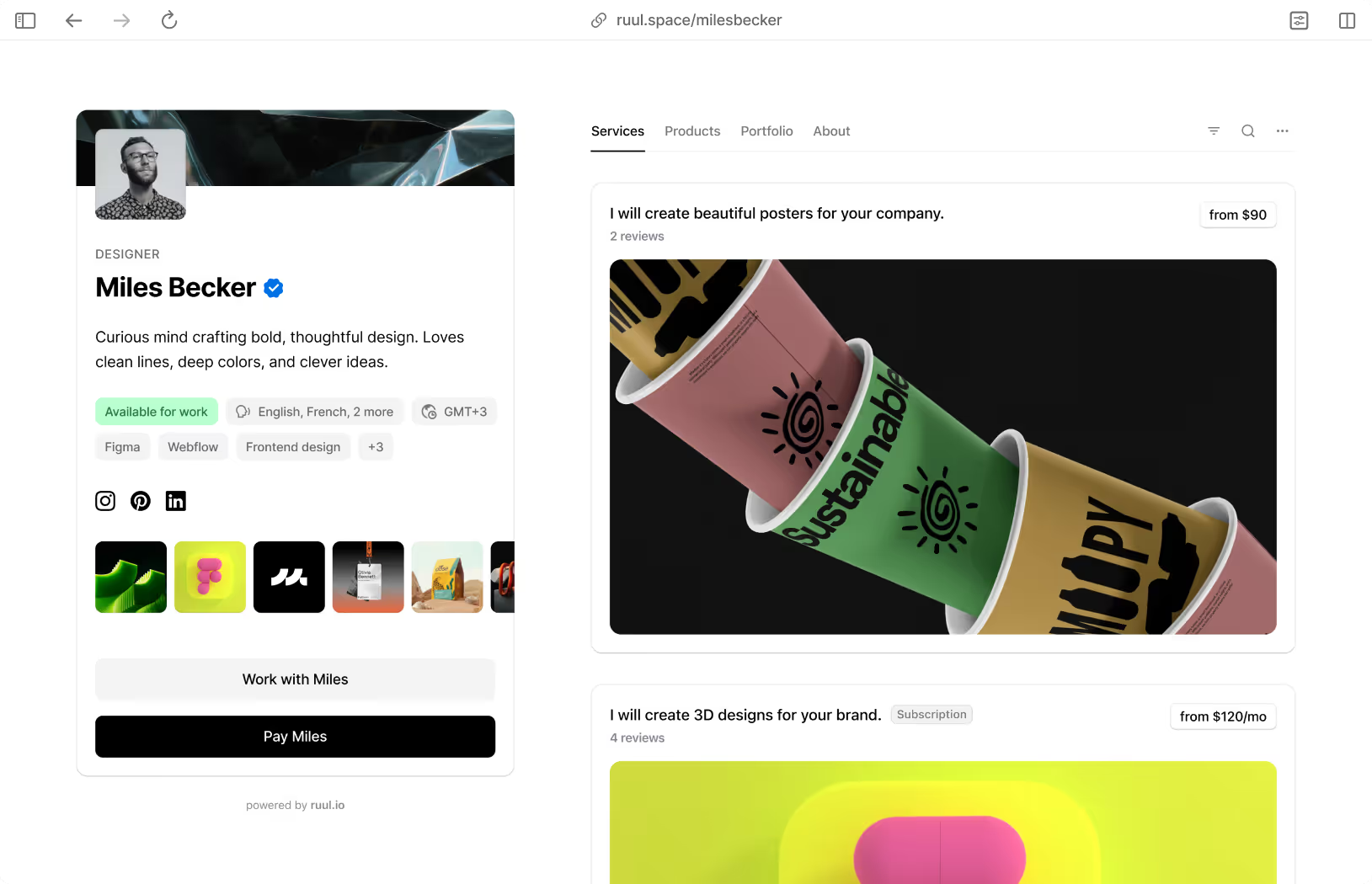Is it just us or have you also noticed that more and more people are eager to start a freelance business? It seems like ever since the onset of COVID-19 and the Great Resignation wave that unfolded in parallel, the rise in the number of freelancers and solo professionals has gained momentum.Many solo talents who are just starting a freelance business face the same challenge: you need experience to get clients and you need clients to have experience. If you find yourself asking ‘But how do I get my first client?’, you are not alone! With this article, we hope to provide some basic tips on how to get your first client and start freelancing with no experience.Whether you are a student, a new graduate, or a professional with a full-time job looking for a side hustle or a new career path, we are sure this article has something to offer for everyone who wants to know how to get clients as a freelancer.
7 tips on how to get your first client
Finding freelance clients can seem challenging, especially when you’re just starting out. But with the right effort and the strong foundation that paves the way for future gigs, we are sure your chances of landing your first freelance client will significantly increase. Without further ado, let’s take a look at the 7 most important tips to get your first client:
- Identify your market and niche
- Seek opportunities to gain experience
- Evaluate and polish your skillset
- Build a stellar portfolio
- Create a personal website
- Tap into your network
- Pitch your services through cold contact
Decide on your market and niche
Whether you are wondering how to start freelancing in India, looking for freelancer jobs in the USA, or hoping to start freelance projects in any other part of the world, the first thing that you need to do is to identify your niche, your skills, and the situation of the freelance market.Some skills such as freelance video and photo editing may be in great demand in certain contexts while others may not be equally favorable in the freelance market. Try getting the know-how of high-income, high-earning skills and see if your interests are compatible with them. Keep in mind that every market has its highs and lows. What is in demand today may remain so in the long run or become less desirable in the future.
Seek opportunities to gain experience
Have you ever heard the term “taking baby steps”? Well, it is one of the most important things to do when it comes to building a freelancing career. Working with clients in a freelance context is surely challenging so instead of looking for the ideal gig or the dream gig to come around, start working on small projects. It is absolutely crucial to be aware that at the beginning of a freelancing career, the single most important thing is to gain experience. Over time, with the increasing number of gigs you took up and the freelance clients you had, the quality of the projects, as well as the number of projects you handle, will also increase.It may be difficult to land your “dream gig” with no relevant experience, and hence the first few freelance projects should be seen as opportunities to gain experience. Even if the budget and scope of the project may be less than ideal, it’s an investment for a successful freelance career in the long run.
Evaluate and polish your skillset
Certain skills and skill groups are among the highest earning skills and they are likely to stay that way for a long time. Here are some of the freelance professions that are currently most demanded within the freelance market:
- Graphic design
- Photo editing
- Video editing
- Web design
- 3D animation
- Java development
- HTML development
- Copywriting
- Accounting and Bookkeeping
- IT related jobs
Build a stellar portfolio
Building a freelance portfolio is one of the foundational steps to take, whether it’s a graphic design portfolio, a writing portfolio, or fine-tuned for any other industry or niche. A portfolio is usually seen as the first point of contact between a potential client and a freelancer.Think of your portfolio as the medium where you market your creative skills, abilities, technical and soft skills as well as the variety of the projects and gigs that you do. Don’t forget that starting jobs as a freelance artist is often facilitated through an impressive portfolio.
Create a personal website
Another great tip on how to get projects from clients is to create a personal website. You can think of your website as an improved and interactive extension of your portfolio where you demonstrate a greater fraction of your abilities and skills, include references and case studies if applicable, and allow people to find you through search engines. Some of the best practices of using a website to promote your work are:
- embedding your portfolio
- optimizing your content or SEO
- using a neat & fast theme/UI
- making sure that your website is user-friendly
Reach out to your network
When it comes to doing business, no network is large enough! In order to start freelancing with no experience, try reaching out to friends, family members, and acquaintances who can spread the word. Getting in touch with relevant people is always a good place to start.Also, enlarging your network by attending events, using coworking spaces and utilizing network building activities can be of great help. It goes without saying that we are living right in the middle of the internet era (or should we say the social media era?) so try making the best of the social media platforms to connect with the right people within the right context.
Pitch your services through cold contact
Sitting around and waiting for the potential clients to show up is one thing, putting yourself out there and reaching the targeted clients yourself is another. While the first method is somewhat successful, the second one surely steps up your game.If you understood the logic behind what we are talking about then you already know what cold contact means. Cold contact (also known as cold calling) is a marketing strategy where salespeople contact potential customers and promote their services and products. You can try reaching out to non-profits, local businesses, and your acquaintances within your network to keep them updated on what you are doing. Make sure you come up with a strategy to pitch your work to potential clients as much as possible to increase your chances.
Freelancer tips for the first-timers
We are aware that landing your first client may be quite a challenge. But the challenges should not let you down if you are determined to pursue the freelance career you always wanted.By identifying your market and niche, seeking opportunities to gain experience, evaluating and polishing your skillset, building a stellar portfolio, creating a personal website, tapping into your network, and pitching your services through contact you can have a solid head start in your freelancing career.If you wish to get up-to-date information and useful tips about all things freelancing, keep following Ruul Blog and connect with us on LinkedIn and Instagram!










